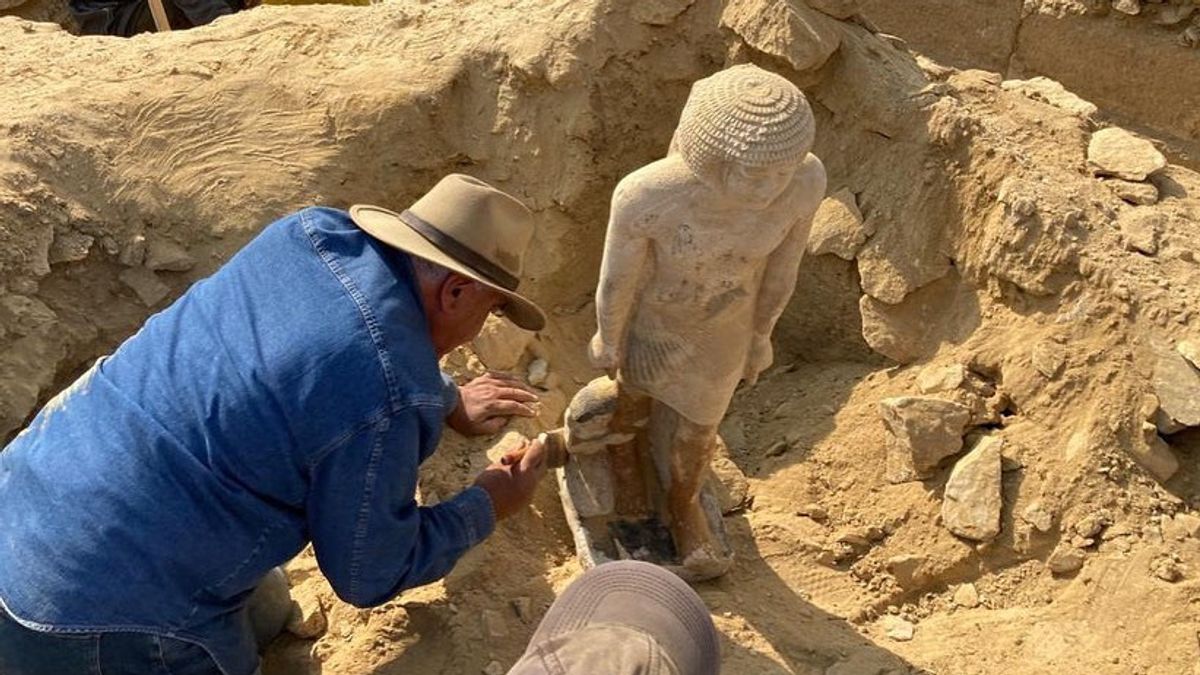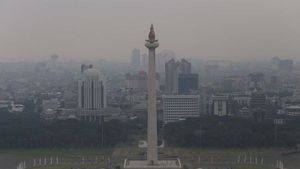JAKARTA - An Egyptian archaeologist found a gold-plated mummy sealed in a giant limestone sarkofagus in an ancient cemetery of Saqqara, Cairo, aged 4,300, becoming the oldest mummy found in complete condition, Egyptian Zahi Hawass said Thursday.
Apart from sarkofagus, including in the discovery this time are 12 statues and pottery. This discovery dates back to the period of the Old Kingdom of ancient Egypt or from around 2700 BC to 2200 BC.
"Finding the mummy and being well preserved in this fertile cemetery is truly a unique thing," Hawass said as reported by The National News on January 27.
Gold flakes were found throughout the mummy wrapper, Hawass said, speaking with the backdrop of the famous Djoser Piramic in Saqqara.
The limestone Sarkofagus that kept the gold-plated mummy was found at the bottom of a 10-meter deep hole sealed behind the stone door, Hawass said.
Another Sarkofagus was found in a similar hole nearby. Layer of clay was found inside the two axes.
"Opening a 4,300-year-old sarkofagus is always an exciting event. The moment when we open the lid and peek inside is a moment that I find difficult to describe in my writings and teachings," said Hawass.
The discovery was made by a team led by Hawass and another team from the Supreme Council of Egypt's Antiquities.
A number of stone reliefs depicting the daily lives of ancient Egyptians were also revealed, some of which came from ancient buried walls found by the Hawass team.
One buried wall remains intact underground, Hawass said.
His team has not reached its end and further excavations will be carried out in the coming weeks to determine its purpose and age.
Two graves were also excavated, one of which belonged to a priest named Meri, who was very well decorated with colorful views of ancient Egyptian daily life.
Another tomb belonging to a priest who served King Unas, the last fibre of the Fifth Dynasty, from 2465 BC to 2323 BC, as a supervisor of his workforce. The two graves contain statues and ceramic pots.
A judge and writer named Fetek is thought to have been buried in another tomb, where a collection of what is considered the largest statue ever found in the area has been found.
"This discovery is very important, because it connects the king with the people living around them," said Ali Abu Deshish, another archaeologist involved in the excavation.
Saqqara is an active grave for more than 3,000 years and has been designated a UNESCO World Heritage Site. It is located in what is the ancient Egyptian capital Memphis, home to more than a dozen pyramids.
Thursday's discovery came just a day after experts in the southern Egyptian city of Luxor said they had discovered a complete residential town of the Roman era, dating back to the second and third centuries AD.
Archaeologists found residential buildings, towers, and what they called metal workshops - containing pots, equipment, and Roman coins.
Egypt has revealed many major archaeological discoveries in recent years, as part of efforts to revive its tourism industry.
The government hopes that the Grand Egyptian Museum, which will open this year following a delay, will attract 30 million tourists per year by 2028.
However, critics say the Egyptian government prioritizes media discovery over harsh academic research to attract more tourism.
أعلن عالم الآثار الدكتور زاهي حواس أن أعمال حفائر البعثة المصرية المشتركة مع وزارة السياحة و الآثار ممثلة في المجلس الأعلى للأثار بمنطقة جسر المدير بجبانة سقارة، قد أسفرت عن عدة اكتشافات أثرية تعود إلى عصر الأسرتين الخامسة والسادسة بالدولة القديمة. pic.twitter.com/f4h23CVomy
— Ministry of Tourism and Antiquities (@TourismandAntiq) January 27, 2023
The English, Chinese, Japanese, Arabic, and French versions are automatically generated by the AI. So there may still be inaccuracies in translating, please always see Indonesian as our main language. (system supported by DigitalSiber.id)













